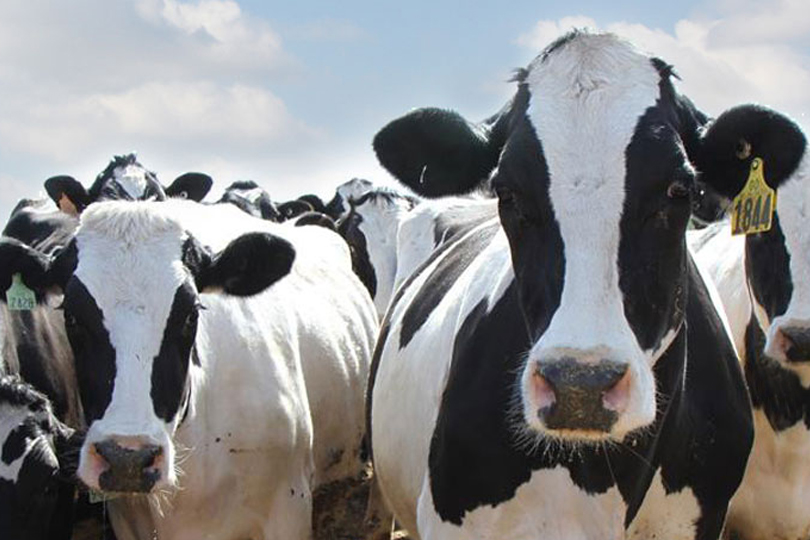By Jessica Domel
Multimedia Reporter
The winter weather may have caught a few Texans off-guard this week, but for farmers, ranchers and dairymen like James Hancock of Muleshoe, preparation is a must.
The mercury dropped down to negative two degrees Fahrenheit Monday at Hancock’s dairy in Bailey County.
The temperature rose to seven degrees that day—the day’s low temperature in other parts of the state.
“We took some time before this whole thing got started and prepared as best as we could,” Hancock, a member of the Texas Association of Dairymen’s board of directors, said. “We had to buy heaters for all of the barns and had to make sure all the water troughs have a little bit of water running so none of the pipes froze, so the cows could have water all the time.”
The trucks at the dairy were plugged in over night so they could start in the morning to feed the Holstein herd.
The dairy has windbreaks on the north side of its pens to keep the cold air off the cattle.
After winter storm Goliath in 2016, Hancock put in another barn to keep cattle warm.
“We’ve prepared as best as we could. So, this year didn’t hit us as hard as that at all,” Hancock said.
Calf hutches face the west in the winter to get as much sunlight as possible during the day, allowing them to warm up. There are also windbreaks near the hutches.
Hancock is feeding the cattle more, too.
“We actually had to go up about four pounds per cow just so they can have the energy needed to stay as warm as they possibly can,” Hancock told the Texas Farm Bureau Radio Network.
During times of stress, like a dramatic change in the weather, dairy cows may produce less milk as they adjust to the change.
“It’s a little bit less. They spend a lot more of that dry matter intake, the feed that we put in, on keeping warm rather than producing milk,” Hancock said. “We’ll see a drop off of a couple of pounds, but not horrible, as long as the wind doesn’t blow.”
When the wind starts to blow, milk production will decline further.
The Muleshoe area saw about an inch to an inch-and-a-half of snow by Monday afternoon. Snow drifts were about a foot or two deep.
“It’s not a whole lot, but it came at us sideways, which is always the hard part up here,” Hancock said.
As of Monday afternoon, they hadn’t had any issues getting around because the snow had not started melting yet.
“The roads are pretty clear. Our county did a good job,” Hancock said. “They quickly got out in their trucks and spread salt and all that other stuff.”
Hancock said right now, it’s all about keeping the cows and the people warm and healthy.
“We’re doing our best to make sure that everybody’s at least semi-comfortable,” Hancock said. “We put heaters in all of our milk barns for our guys to make sure that no one’s too cold, and we made sure everybody had the appropriate clothing on.”

